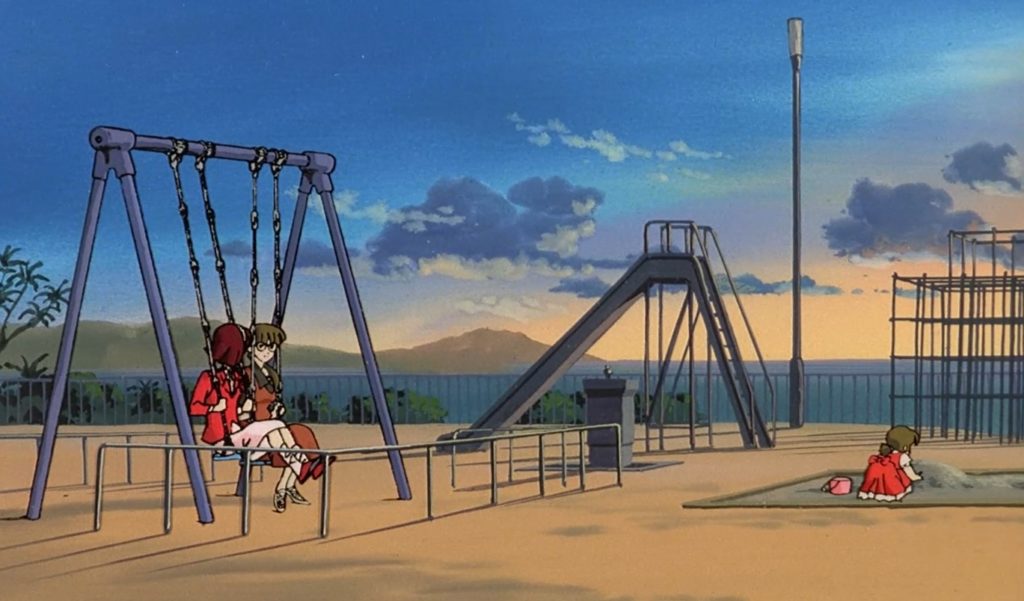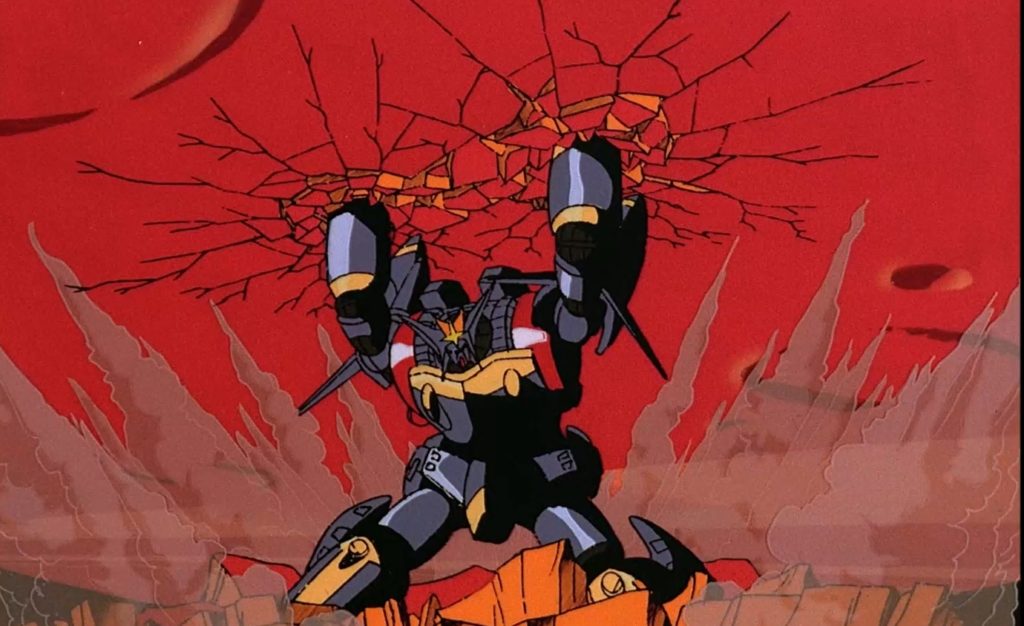Gunbuster Files: Shattered Jewels
August 12, 2023 · 0 comments
By Jonathan Clements.

The title of the fifth episode of Gunbuster derives directly from Robert Heinlein’s 1973 novel Time Enough for Love, which ironically had very little to do with time dilation. It was, in fact an exploration of, among other things, immortality, longevity, incest, polyamory and time travel, but ultimately kept returning to romance of different forms, as does the cast of Gunbuster. It was translated into Japanese in 1978 by Tetsu Yano, a prolific translator who was also an author in his own right, whose own Dagger of Kamui was itself turned into an anime in 1985.
The episode owes a lot more to Joe Haldeman’s Forever War (1972, translated into Japanese by Jun Kazami), in which soldiers in an alien conflict repeatedly return to a home-world that has moved on decades (and then centuries) without them. In Gunbuster, we first get a sense of what this might mean for Noriko, when she runs into her old classmate Kimiko, now a mother. Masako Katsuki plays Kimiko in episodes five and six. Yuriko Fuchizaki, who played Kimiko in the first episode, now voices her own daughter.

There’s lovely bit of character work on the swings in the park, as Noriko, still a teenager, swings away with gay abandon, while Kimiko, who is a mother approaching thirty, just takes the time to sit down. There is some sort of proprioceptal transformation that comes across a lot of adults in their twenties, where being on a swing is suddenly not the awesome fun that it once was, and the differing way that these characters react to it is a lovely evocation of the difference and distance that has come between them.
Kimiko may, or may not have fallen for some fake news. She thinks that the new super-spaceship Eltreum is an evacuation ship. The military claim it’s a battleship. It may be both of course, but Kimiko is worried that she and her daughter are going to be among the 99% of people left behind when the Eltreum flies off and essentially abandons Earth to the space monsters. In his memoirs, Toshio Okada wrote that Kimiko was right. Eltreum really was a secret Earth evacuation ship, and that was being kept from the general population.

Much of the later episodes of Gunbuster evoke the latter days of the Pacific War, when the people of Japan found themselves facing starvation and deprivation, and evacuation, specifically to Manchuria, and the media were reporting victory after victory in remote battles, which suspiciously were taking closer and closer to the home islands. Eventually General Tojo established an ABSOLUTE DEFENCE LINE, claiming that Japan was conducting a phased withdrawal designed to lure the enemy closer, and wasn’t losing at all, honest.
The Absolute Defence Line was something that the enemy was guaranteed not to cross, because that’s what the Japanese were going to hold, which all comes tied up with the rhetoric of “shattered jewels” and suicide missions, and the last voyage of the original Battleship Yamato, all a bunch of stories from the end of the war that were the last gasp of the military authorities.
Incidentally, it’s echoed repeatedly in Neon Genesis Evangelion, not only in some of the phrasing used to describe alien attacks, but also in the form of the all-important Absolute Terror field, which is a more psychological sense of human beings having a psychological Absolute Defence Line as well.

For Japanese viewers, it also evoked the meme of the “Shattered Jewel”, which was a concept that grew and grew throughout the twentieth century, until it came to dominate Japanese military thought in the last days of the Pacific War. The term originated with Saigo Takamori, the famous “last samurai” in the 1870s, when he quoted an ancient Chinese poem that it was better to be a shattered jewel than an intact roof tile. That was the Chinese version of “better to die on your feet than live on your knees”, and in Japanese military tradition it came to represent a certain, suicidal resolve.
The term “shattered jewel” (gyokusai) cropped up in the military anthem Teki wa Ikuman (A Myriad Enemies), which was first performed in 1891, and became a staple of every Imperial Japanese Navy event thereafter for the next fifty years: “Tens of thousands of enemies may come / But they are rabble like so many crows / But even if they are not crows / Absolute justice is sure to prevail / If you are routed, it will disgrace our nation / Dying in the advance is the honourable thing to do / Rather than endure as a roof tile / Be shattered like a jewel.”
Fast forward fifty years, Japan is losing the Pacific War, and the Allied forces are getting closer and closer to the Home Islands, with increasing reports of suicidal defences of Japanese positions. General Tojo tried to spin this as a good thing, as a new duty by the Japanese forces to die in as explosive and destructive a manner as possible, to delay the inevitable defeat, to hold off the Allies, to scare them so much with Japanese resolve that maybe they will make concessions rather than invade the home islands. These terrible defeats showed up increasingly in the military dispatches as “shattered jewels”. It became media shorthand for a battle in which everybody dies, and the enemy is left with nothing but ruins and ashes.
This is what the human race is facing in Gunbuster: the prospect that they will be entirely wiped out by the next alien assault. Some are aware that Eltreum is a secret evacuation project, but even that is a real Hail Mary pass, because who is to say the space monsters won’t track them down wherever they end up.
Jonathan Clements is the author of Japan at War in the Pacific. He might like Gunbuster a bit. Gunbuster: Aim for the Top is released in the UK by Anime Limited.
Leave a Reply